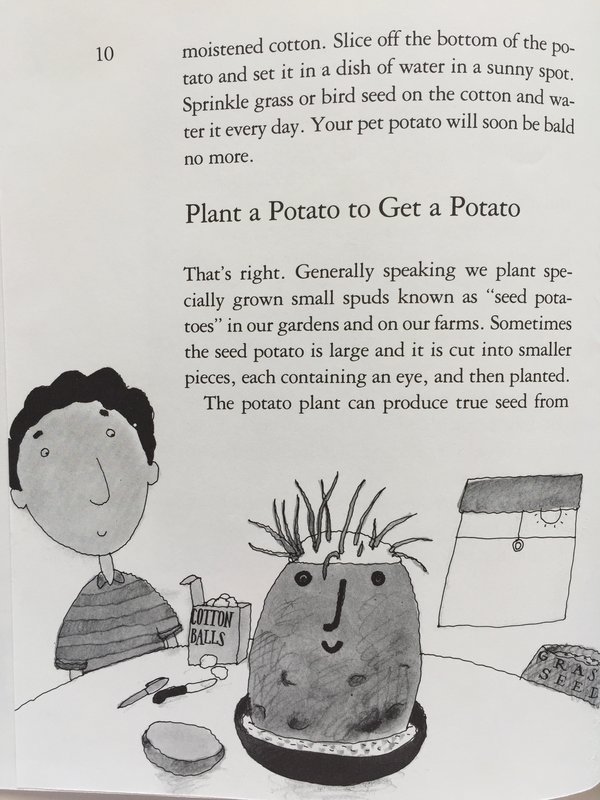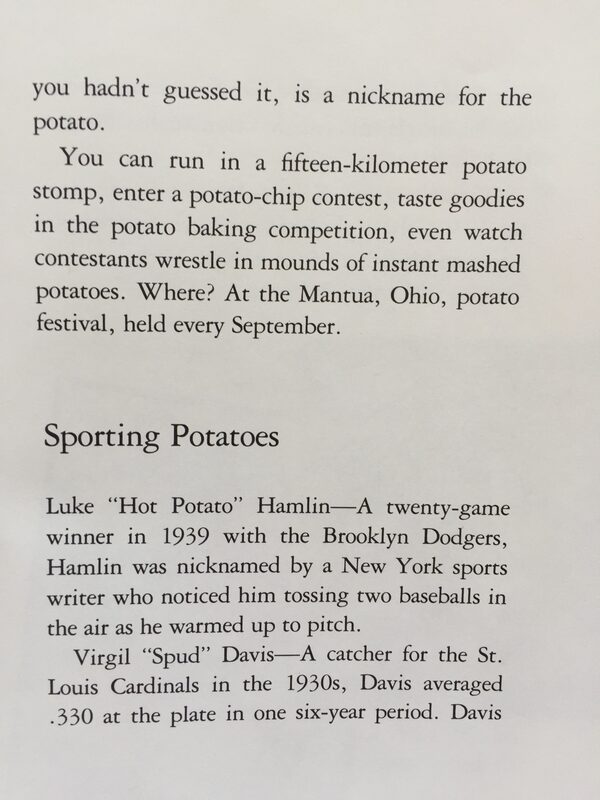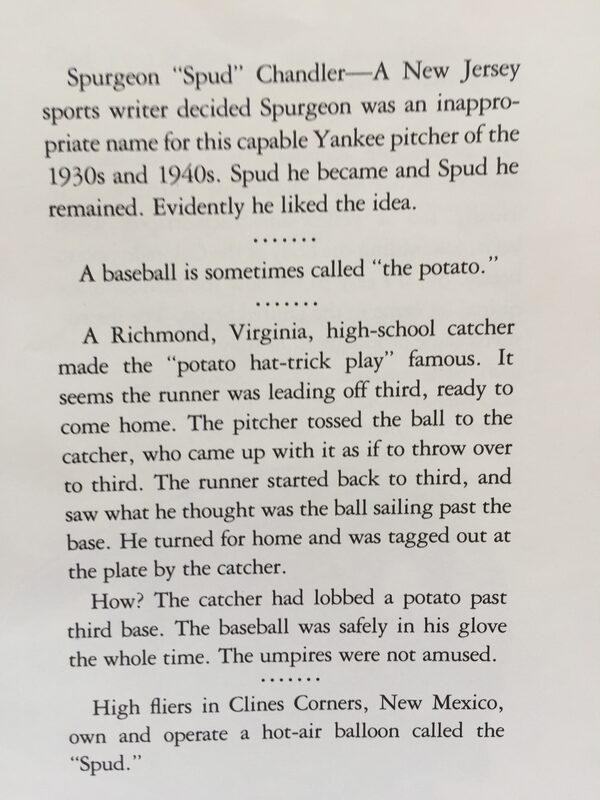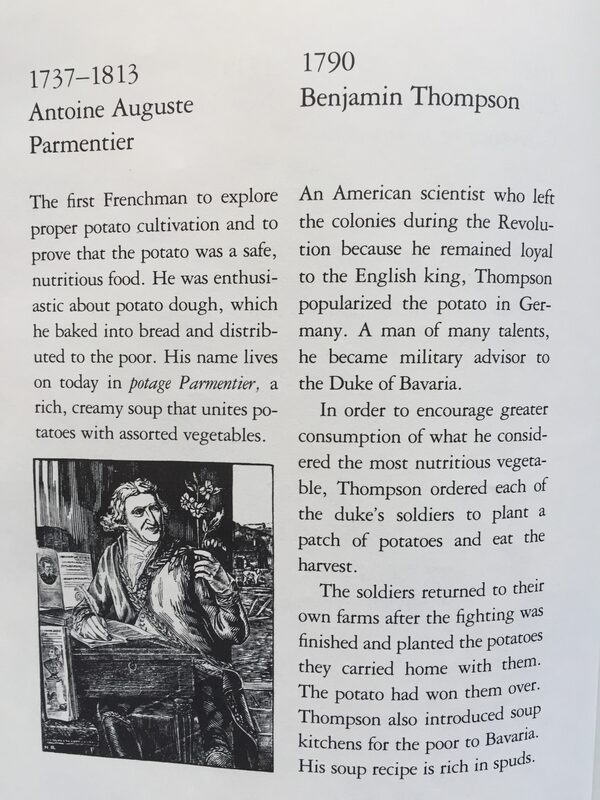- Home
- About
- Exhibits
- The Well-Traveled Potato
- Delicious
- Potatoes 101 and Fun Science and Art Projects for All Ages
- Potato Fun: Heads, Puns and Guns
- Cinematic and Musical Potatoes
- Surprising
- Praiseworthy
- Potato People
- Potato Places
- Book Shop
- Wide World of Potatoes: Links
- Contact Us
- Buy The Collection? Set Up TPM in Your Country/Community?
Potatoes 101

Students Study Their World Through the Eyes of the Potato
International School of Brussels students and their teacher, Tom Hughes, started the world's first potato museum in 1975 and helped develop the lesson plans that allow anyone to explore and see the world through the eyes of the potato. Click here for the basics.
Potato Projects












Take a Close Look At a Potato


The Potato Museum has available for sale proven curricula for teachers. Contact us for more info.
Activity #1 Group Examination of Potatoes
Participants sit in a circle around a pile of mixed shaped and sized potatoes, at least one for each person.
Invite everyone to select a spud one at a time. You can determine who goes first by playing the classic choosing up game “One Potato Two.”
Participants are next directed to:
—examine closely their potato noticing shape, size and distinguishing features such as nicks and bruises
—give their potato a name and think up a brief story about their now “potato pal.”
—students turn to a neighbor and introduce their “spud buds” and share their stories
—take a last look at their potatoes and return them to the center of the circle making a pile again
—participants face away from the potatoes while the pile is “stirred up” and the spuds moved around and covered with a cloth, potato sacking or burlap perhaps.
—participants turn to face the pile of potatoes and are told that potatoes grow under ground and they will now “pick-up” their potato from the pile as it is uncovered.
—participants, one at a time or all at once, “find” their special potato
—discuss with their neighbor or the group at large what they’ve learned/experienced so far.
The group leader, next, explains while participants look at their potatoes or other visual aids, how potatoes are like people:
—each has a head, eyes, eyebrows, a face, front, back, top and bottom
—both are full of water, about 75% of the weight.
—both humans and potatoes come in many different skin colors
—both scar, bruise and age
Activity #2: Art, Creative Writing, Technology
Participants are directed to draw, sketch, photograph, cartoon, write about their potato using a variety of medium including computer applications.
Activity #3 Fibonacci Numbers and Spiral
The group leader introduces the concept of Fibonacci numbers and the Fibonacci Spiral using a potato.
A sequence of numbers such as 1,1,2,3,5,8,13…, in which each successive number is equal to the su of the two preceding numbers. Many shapes occurring in nature, such as certain spirals in pineapples, cauliflowers, sunflowers and the eyes of the potato can be described in terms of the Fibonacci sequence. Video link: https://youtu.be/LGuATXwDvNY
Activity #4 Chemical Composition of the Potato
The group leader introduces the next demonstration by mentioning that many people enjoy “juicing” and drinking their vegetables including potatoes, asking participants to take turns describing their experience with vegetable or fruit juices.
The group leader proceeds with the demonstration:
—shows juice extractor and the individual parts
—selects a potato and cuts it into several large pieces, noting the moist interior
—asks participants to predict what will happen
—the group leader supervises students putting slices into the juicer, which produces a stream of potato juice into a container and participants examine the liquid and discuss.
—participants are told what nutrients are in the liquid
—the extractor components are disassembled and the fiber or dry cellular matter of the potato is examined and discussed. Fiber is essential for proper digestion. The bulk and weight of the fiber in the potato, for instance, is an important factor in pushing wastes through our intestines and excreted.
—the white crystals that have stuck on the sides of the extractor are the starch granules of the potato which are complex carbohydrates or sugars which provide energy.
—participants learn that randomly mixed colored starch crystals glued on glass plates were the source of the world’s first color photography known as “autochromes” invented by the French Lumière brothers.
Mirror view in a diascope of a 1913 Autochrome of Percy MacKaye, photographed by Arnold Genthe.
More activities are in development.
Potato Plastic: Sustainable Alternative
Media Coverage of The Potato Museum's Educational Programs
Planet Potato Educational Program for All Ages

Suitable for students of all ages, "Planet Potato" is an interactive 40 minute program that explores the history and social influence of the world's most important vegetable. Along the way audiences learn where it comes from, how it grows, ways it is eaten around the world (other than fried) and how potatoes have transformed the way we all live.
Using museum artifacts, objects, toys and other props, Tom Hughes takes a look at how history and social studies have been influenced through food and how geography has determined what people eat. He engages students directly, inviting their active participation in the program, with role-playing, assisting in math and science demonstrations. ( No matter what people eat, it all ends up in the same place, the digestive system or gut. At the close of each program, using a funny prop, Tom shows how what we eat really does matter.)
All programs mesh with and support National Education Standards in Social Studies, History and Geography. They are interdisciplinary, (selected math and science concepts are included,) multi-cultural and hands on, with an emphasis on cross curriculum global awareness. The programs enrich and bolster current school curricula.
STUDENTS WILL:
--Never look at food, especially the potato, the same way again.
--Understand important issues like globalization, using French fries as example.
--Be active participants in role-playing, math and science demonstrations.
--Understand that their food choices have important consequences.
--Be motivated to lead active, healthy, intellectually engaged lives.
Here are some scenes from the program Planet Potato:
 |
Our potato books &
educational materials

The Great Potato Book by Meredith Sayles Hughes & Tom Hughes, published by Macmillan, NY, 1986. The history of potatoes illustrated with artifacts and images from The Potato Museum collections. Chapters include: the living potato; the powerful potato; the delicious potato; the valuable potato; the well-traveled potato and the playful potato.

Buried Treasure, by Meredith Sayles Hughes (Lerner Publications, 1998). Potatoes in space? Super-nutritious carrots? A 1,500-pound tapioca pudding? This lively book helps students connect root gardening with history, biology, cultural studies, and more with intriging historical anecdotes, in-depth views of planting and harvesting, and detailed diagrams of these important vegetables. Packed with colorful illustrations and photos.
Potato Power Poster &
"What Can You Teach with a Potato?" Lesson Plans

"Potato Power:
Potatoes Fuel People, Animals & Machines"
Because of its high starch content, the potato is an important human energy source. This same starch can be converted to ethanol alcohol, a gasoline substitute which can be used as an alternative fuel. The Germans used the potato as a fuel source during World War II. Farmers in Canada have used potato fuels to power their farm equipment.
Lesson plans included on the back of the poster include:
--research project about industrial use of potatoes for alterntive fuels;
--potato vocabulary search;
--potato printing art activity;
--making mashed potatoes and potato chips;
--proving potatoes have starch;
--small container potato growing;
--observating botanical features of a potato.
Explore Online Activities: Here Are Two, More to Follow
Wordle







































































